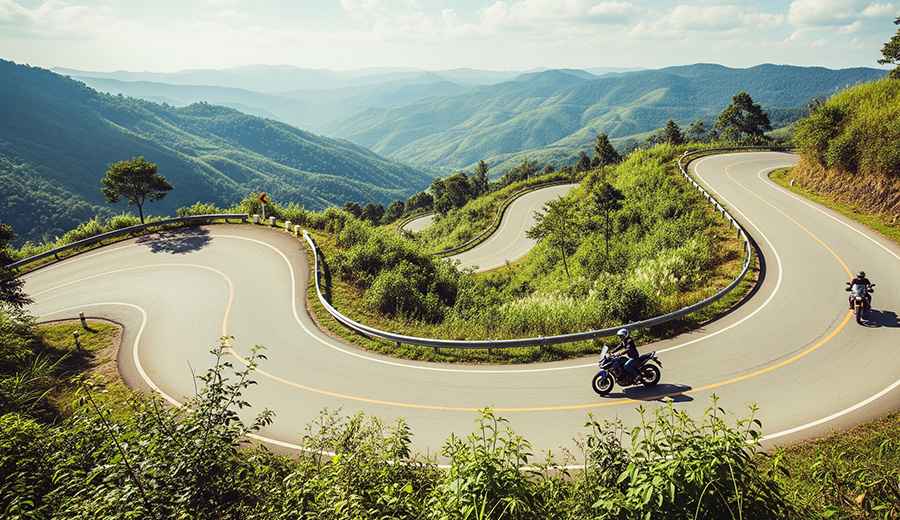Weathering the Bends: Your Seasonal Guide to the Mae Hong Son Loop
Mae Hong Son Loop in northern Thailand is the sort of road that turns fast-talking riders silent once the visor drops. Stretching about 650 kilometres, it leaves Chiang Mai on Route 107, dives west onto Route 1095 and returns through Mae Sariang and Doi Inthanon, accumulating 1 864 officially numbered bends. Earth here is restless: three separate mountain chains force the pavement to rise above 1 700 metres, then plunge without warning toward river valleys where mist clings like gauze. Asphalt quality changes by the minute, and rainy-season landslides can leave fresh gravel where there was solid tar the night before. Fuel is plentiful only in the larger towns of Pai, Mae Hong Son and Mae Sariang; everywhere else the safest strategy is to stop whenever you see an orange PTT pump, even if the tank still feels half full.

Most riders break the loop into four segments. The opening run from Chiang Mai to Pai is a brutal warm-up; gradients hit twelve percent, hairpins stack one atop another and tour vans lay thin films of diesel on the apexes. Between Pai and Mae Hong Son, the road hangs from limestone cliffs that shed small boulders after every tropical downpour, while a pair of unlit tunnels demands absolute commitment to the high beam. Southward to Mae Sariang, teak forest closes in, wooden one-lane bridges keep you guessing, and free-grazing cattle remind you that a horn can be as valuable as a front brake. The final push back to Chiang Mai often includes a detour up Route 1009 to Doi Inthanon, Thailand’s highest paved point at 2 565 metres, where temperatures fall below ten degrees Celsius even in April and clouds drift across the road at knee height.
Choosing the right season is critical. From November to February the air is dry, the sky polished cobalt and the tarmac trustworthy, though dawn frost occasionally glitters above 1 400 metres. March to May bakes the valleys to 38 °C; smoke from slash-and-burn fields reduces visibility to little more than two hundred metres and road tar melts into black serpents that grab a front tyre. June through October answers with monsoon storms — spectacular to watch from a ridgeline café, treacherous when the same storm pushes a shallow mudslide across the next corner.
A lightweight single such as a Honda CRF 300L can dance through the tightest bends, yet riders carrying a pillion or heavy luggage usually prefer a 250-plus twin. Dual-sport tyres resist the grinding red laterite dust far better than sport-touring compounds, and a hydrophobic chain lube is not a luxury but a survival tool—O-rings here perish in a single wet day if neglected. Mesh jackets and hydration bladders save more hospital visits than body armour; heat-stroke medi-vac flights are depressingly common among first-timers who underestimate the tropics.
Everything mechanical, from ADV-grade rubber to spoke-truing, is easiest handled in Chiang Mai before you commit to the loop. The city also hosts a healthy, regulated rental scene where independent travellers can collect a properly maintained bike with real insurance instead of a photocopied policy. A reputable starting point is Chiang Mai scooter rental, whose mechanics have seen the Loop destroy enough brake pads to know exactly what a fresh set looks like.
Treat every blind corner as occupied, keep average speed near forty kilometres per hour and remember that thunder in these mountains is not theatre — it is a signal that the road surface ahead may already be gone. Manage that discipline and the Mae Hong Son Loop will repay you with green horizons, high-jungle air that smells of ginger and pine, and bragging rights to one of Asia’s most demanding public roads.